Today is my birthday! As a gift to myself, I am allowing myself to talk about one of my favorite topics: creative maintenance! What’s that? Creative maintenance is how we preserve what we create, and develop simple systems that encourage us to create and share. We do this to protect the work we do, and honor our creative vision.
I obsess about this, but tend to resist writing about it for this reason: maintenance sounds boring. Like a chore. But I fear that every day, we put our writing and creative work at risk. We wrestle with distractions, we get caught in the same cycles that prevent momentum, and we don’t backup our work.
Having grown up as an artist and writer, with my days filled with unfiltered conversations with other writers and creators, I find that without creative maintenance, we risk so much:
- Not knowing what to create
- Not feeling we have the capacity or resources to create
- Not knowing the path from idea to done
- Not sharing what we create
- Losing our work while creating
- Losing our work after creating
Having worked with thousands of writers, I notice those whose work persists — who create and share consistently over time — attend to creative maintenance. Today I want to talk about exactly why that matters and how it is done.
Before we dive in, I’m excited to announce my next workshop for writers and creators: Find Your Next 100 Readers! Cultivate the Craft of Connection. Join me on March 22nd for a live workshop with Q&A. All who register receive a full video recording. $49 for access. Full information and registration here.
Okay, let’s dig into to today’s topic…
Preserve What You Create
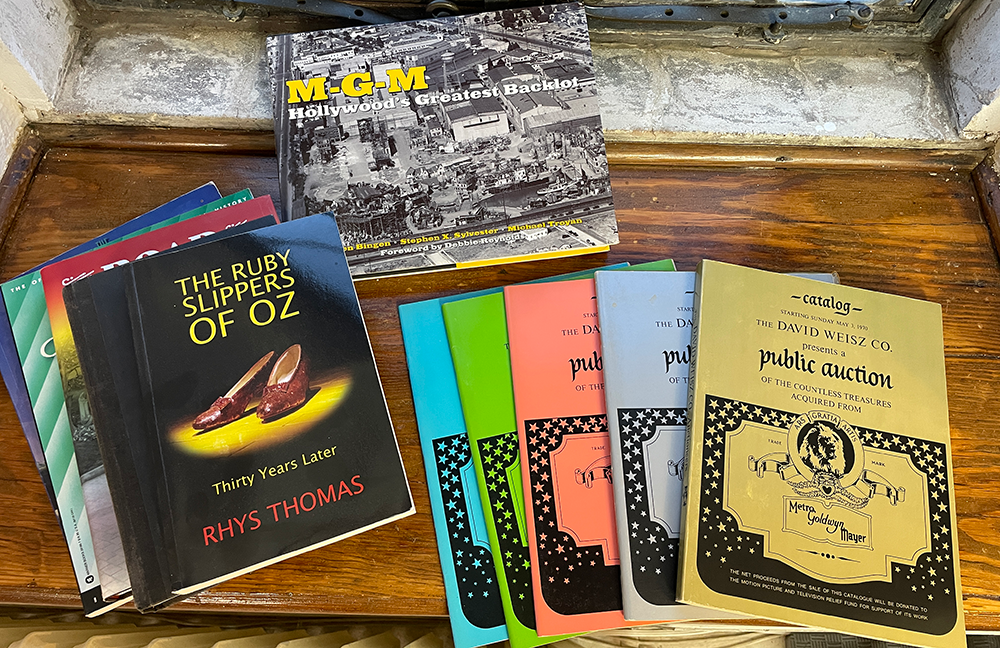
Yes, I have weird hobbies. So on the right side of the photo is a set of original auction catalogs from the 1970 MGM movie prop and memorabilia action. This is literally one of my favorite possessions. In the rest of the photo are my books on the history of MGM and the making of The Wizard of Oz. On top is one of my all-time favorite books, The Ruby Slippers of Oz, which recounts the long history of what happened to the movie props of the slippers from the movie.
Why am I writing about this? Because to me, this embodies what it means to maintain and preserve what you create. What can take years to create can be wiped away in an instant. 75% of the silent films ever made are lost to history. In 2008, a fire at Universal Studios destroyed more than 100,000 original recordings. But here is the story that I have obsessed about for years…
In 1969, someone bought the MGM movie studio, and decided to liquidate a lot of it. Their focus was more on leveraging the brand name for their ventures in Las Vegas. So the following year, MGM auctioned off its entire history of costumes and props. Warehouses of items including costumes from The Wizard of Oz, and countless other items worn by stars such as Errol Flynn, Bette Davis, James Dean, Elizabeth Taylor, Fred Astaire, Susan Hayward, Greta Garbo, Vivien Leigh, and others in some of their most famous roles. Dorothy’s dress? $1,000. Cowardly Lion’s costume? $2,400. MGM also sold off their historic back lots, and flattened sets used in classic MGM films. That land is now filled with condos:
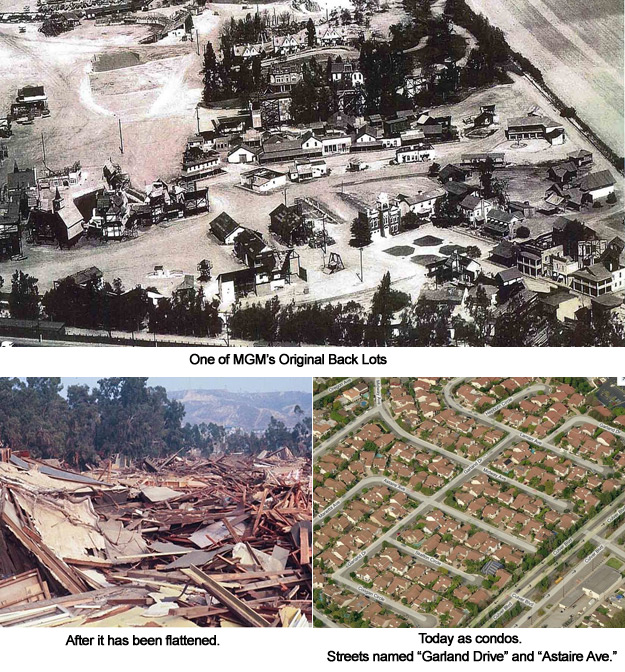
Here are some other images from the auction:
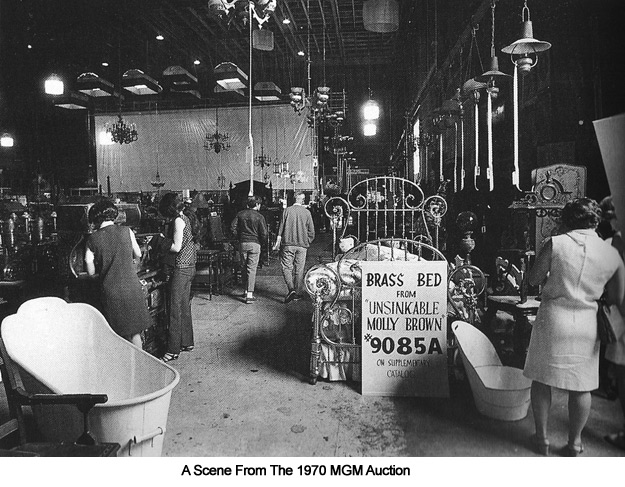
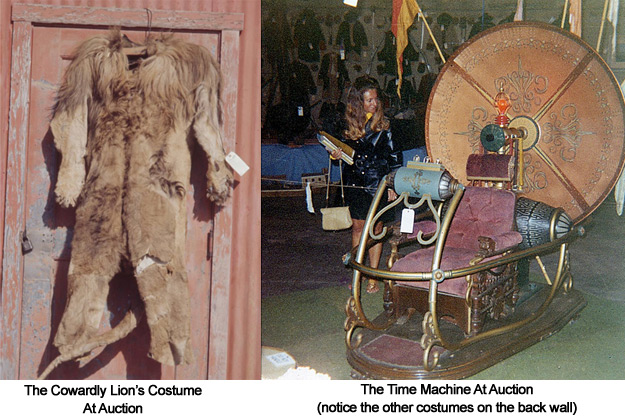
It took decades to create and collect these items, and a few days to scatter it all to the wind. Some of the famous costumes and props have later resurfaced, but many have never been seen again.
I am incredibly sentimental and love old things. I mean, just look at many of the objects in my studio:
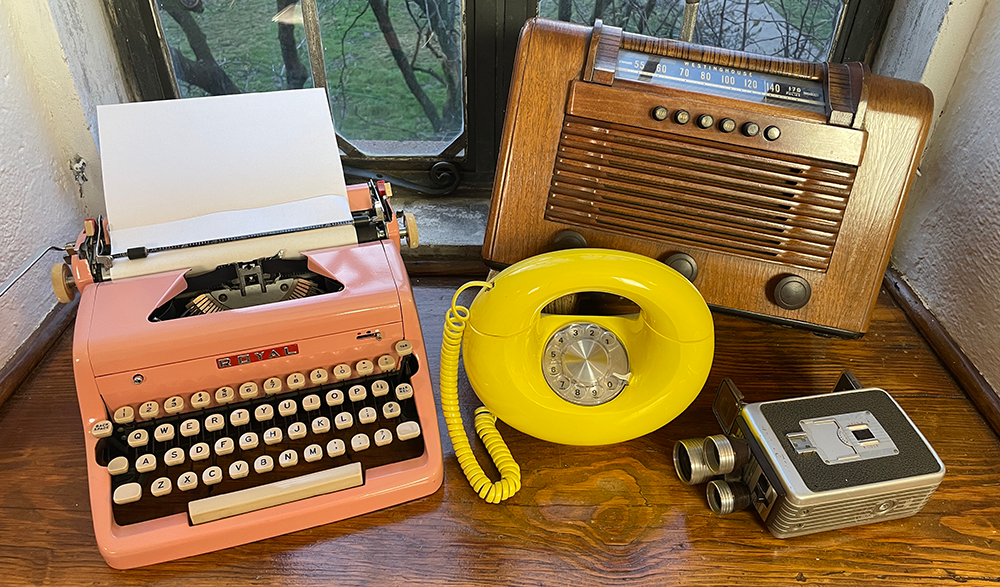
These items remind me of how we used to create and communicate. They are also stark reminders that to create and share takes time. Back then, even more so because of the limitations of the tools and mass communication at the time.
Years ago, you had to save up hundreds of dollars to record a video that didn’t even have sound, you couldn’t record more than 4 minutes at a time. Plus, you had no way to distribute it. On the typewriter, every typo would require you to dab on Wite-Out, wait for it to dry, then correct it. I have to imagine that a significant portion of my readers don’t even know what Wite-Out is! Yet it was such a big part of my childhood, with little bottles of it a staple on my dad’s desk, always being swiped by someone in the family in a writing emergency.
The tools we have at our disposal are always rudimentary compared to our imagination. If you are a writer, you are creating worlds and concocting inspiring ideas in your mind. Years ago, we would use a pen and paper or typewriter to capture what we created. Today, lots of writers are more likely for a writer to use a 6-year-old laptop with outdated software that hasn’t been backed up.
For what you create, I encourage you to preserve it. To consider the body of work you are developing slowly over time.
Creative Maintenance
Here are some ways that I perform creative maintenance each week. Do you have to do them all? Nope! Do what makes sense. And forgive yourself when you fall out of the habit. With so much of maintenance, it is a constant ebb and flow of creating the habit, falling out of the habit, and then starting it again. That’s fine!
- Establish a system. Any system — including the most basic — is great! For each of the items below, I tend to have a simple system each week that I repeat. I skip some weeks, because as I mentioned, life is busy. But when you have a system, you have something to fall back on. You aren’t constantly recreating the wheel.
- Organize to-do’s. When I consider short term goals and medium-term goals, I like to get them all down on paper. Then, I break the larger goals down into their simplest possible steps. It’s common for me to use a spreadsheet for these tasks, because by its nature it allows me to break things down, and put in notes updating my progress. What I might start out thinking is a 10-step process, often turns into a 30-step process. Did I add 20 more items? No! Instead, I realized that “Step 3” can actually be accomplished through performing 3 smaller tasks. For instance, I have been doing a lot of technical maintenance to preserve my past writing, my website, and my client work. So I created a spreadsheet to get really specific about how I can attend to this work each day, without overwhelming myself. Each day the tasks seem tiny, almost insignificant. But over the course of a month, they really add up. And when life gets messy and I shelve the project, I now have a spreadsheet — and system — to return to.
- Actively Manage the Day. I use a calendar to clearly define my days ahead of time. I have two young kids, a 100+ year old house that needs constant repairs, and run a small business that is the sole income for my family. This means I am the world’s luckiest human being, but also that there are 100 things that can derail my days. To ensure I do the work that matters most, I plan each day ahead of time, blocking out large chunks of time for my clients, my newsletter, and other critical tasks. Do these blocks of time move around a lot? Sure. But again, they give me a system to start from as a foundation.
- Weekly cleanups. Every Friday, I ensure my computer desktop is clear, I go into Dropbox where I manage my files and ensure it is organized, I make sure my email inbox is empty, and I clean my studio. Too often, we try to squeeze all of this cleanup into the 10 minutes before we leave the office on a Friday, which isn’t really fair; this work takes time. These weekly cleanups allow me to feel a sense of accomplishment and refreshed for the next week. Do I skip some weeks?Absolutely. Do I always organize everything perfectly? No way! But I attend to this as best I can, and over time, that is more than enough.
- Create backups. I have multiple redundant backups of my writing and work files. Some are obvious like using a backup system that comes with my computer. But as an anxious person, I begin thinking of scenarios like hacking and fires, and create multiple redundant backups in different locations. I also consider the importance of hardware backups. If my computer died today, how would I not only access my files, but perform my work? So I have redundant backups of almost all of my work hardware. Is that overkill? Maybe. But if my camera dies just before doing a live workshop, I like knowing that I can replace it — or any part in my system — in moments. Or if the power goes out at my studio, that I can be up and running again at my home office within 15 minutes.
- Actively manage inputs. So many writers I speak with are downing in, and overwhelmed by, email and similar inputs in their lives. I find that we tend to prioritize these channels because often someone is waiting for something from you. So our creative goals get put on the back burner. I encourage you to not treat your inbox as a to-do list. Instead, I move tasks from email to another system (see spreadsheets and calendars above!) so that my inbox is always clear. This also allows me to communicate quickly with anyone who emails me, even if that reply back to them is, ‘I will get back to you on this within 72 hours.’ I find that good communication is a craft, and one that helps us each feel heard and connected. So quick replies matter to me.
- Set and honor boundaries. I keep saying this, but it bears repeating: I know you are busy! To the best of my ability, I try to set boundaries and keep them. For instance, I may schedule time to read the newsletters I subscribe to, instead of allowing myself to be constantly distracted when a new one is published. Or I may not check or answer email after 4:30pm because that is family time. Boundaries are a way of attending to mental health, and focusing your attention on what matters most to you in a moment. I encourage you to set boundaries that feel right to you.
So many writers worry that their newsletter or book doesn’t matter, or that their voice doesn’t matter. It does. And we preserve these things because they matter. You are unique in this world, and how you share your ideas, perspectives, and experiences with others creates a richness in how we understand who we are.I simply encourage you to honor your creative vision through creative maintenance.
Let me know in the comments: how do you attend to creative maintenance? What has worked for you? What challenges get in the way?
And please consider joining me for my next workshop: Find Your Next 100 Readers! Cultivate the Craft of Connection. Join me on March 22nd for a live workshop with Q&A. All who register receive a full video recording. $49 for access. Full information and registration here.
And here is a link to the video I create for my paid subscribers this week: What do you want people to feel? Content doesn’t matter. Human connection does.
Thanks!
-Dan
